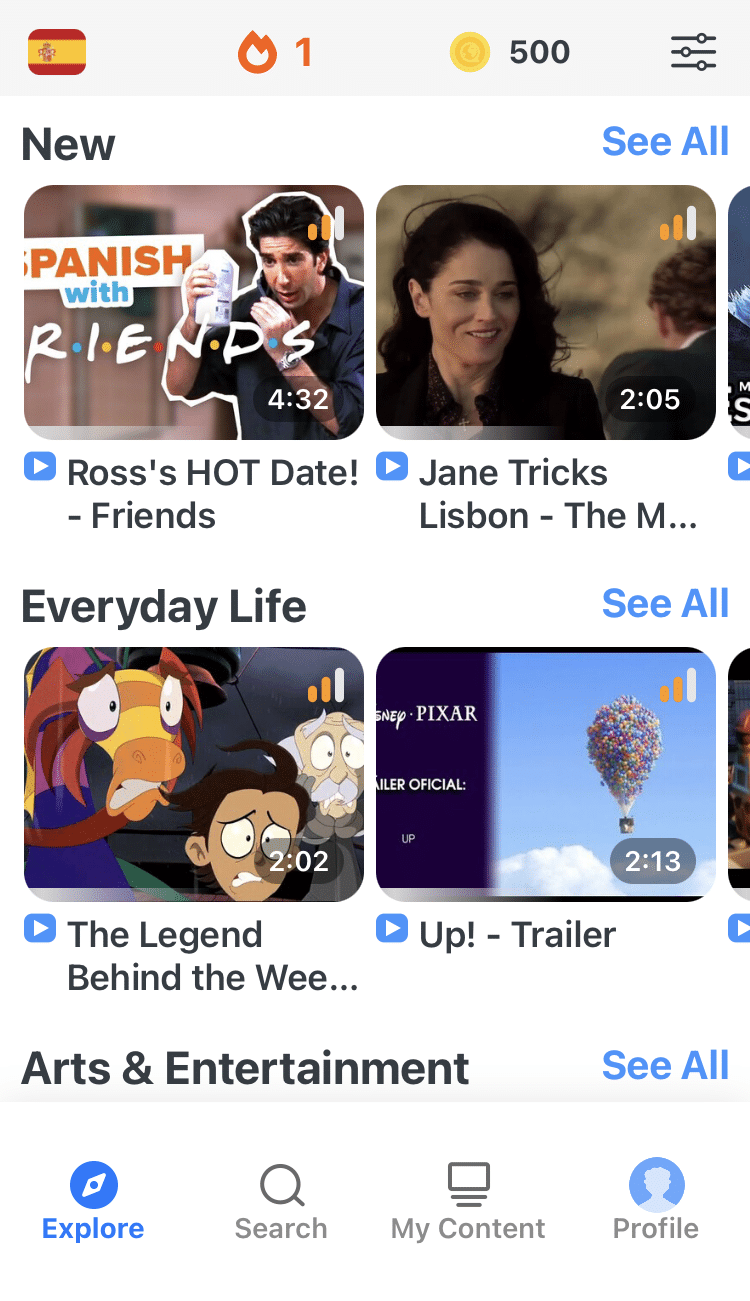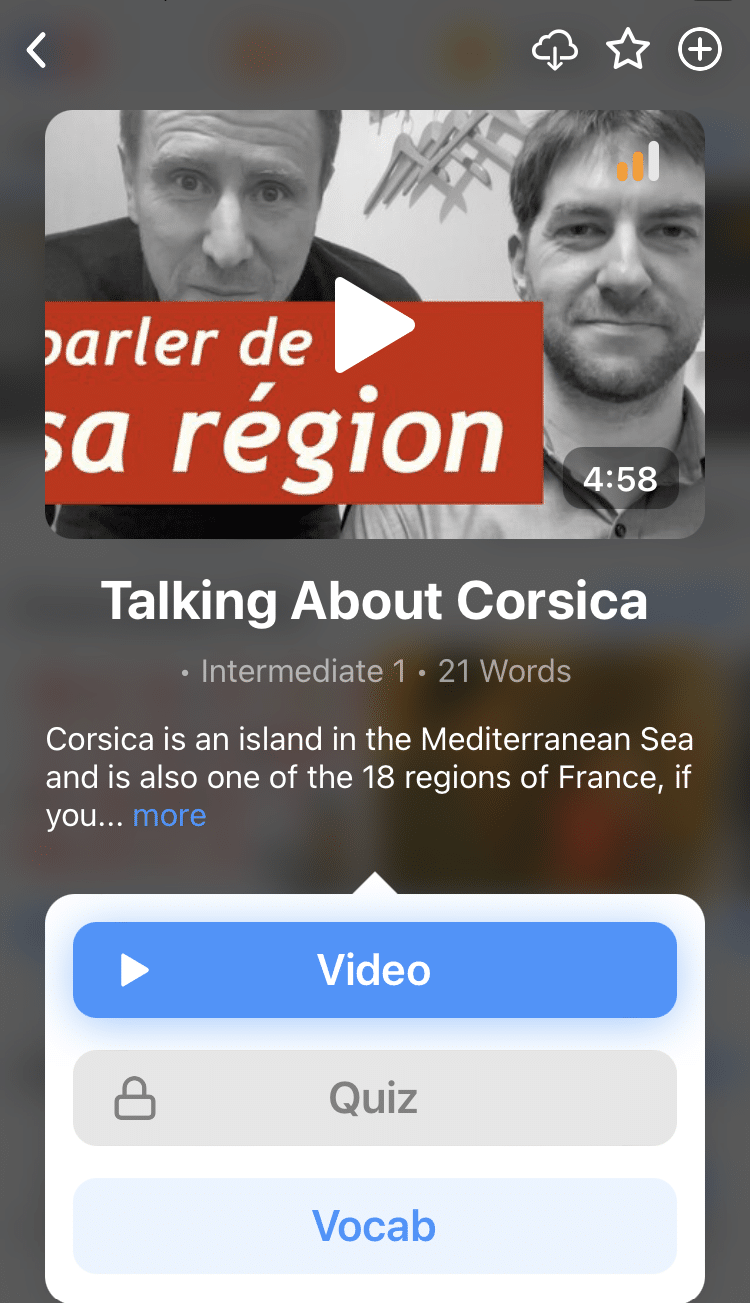
How to Train Your Brain to Think in a Foreign Language
We’ve all heard that thinking in a foreign language is a sign of real fluency.
But I bet you haven’t heard that it’s the fifth key language skill that all learners must develop—falling right in line with speaking, listening, reading and writing.
In fact, thinking in a foreign language can be its very own path to fluency, not just a result of fluency.
And like the other skills, thinking in your target language is absolutely learnable. All it takes is some practice!
Here, we’re going to show you how to make this happen.
Contents
- 1. Translate Your Thoughts
- 2. Start Using Monolingual Dictionaries
- 3. Write in a Journal
- 4. Read More First Person Literature
- 5. Immerse Yourself in Native Content
- 6. Listen and Sing Along to Songs in Your Target Language
- 7. Carry Out Your Daily Activities in Your Target Language
- 8. Use Labels to Prompt Your Thoughts
- 9. Practice Speaking in Your Target Language With Native Speakers
- And One More Thing...
Download: This blog post is available as a convenient and portable PDF that you can take anywhere. Click here to get a copy. (Download)
1. Translate Your Thoughts
You could have thought of this one, right? Sure, it seems like the most obvious step to take, but not everyone does it. Some people are very visual or quantitative, meaning they don’t have streams of words constantly going through their brains.
If you don’t already narrate your life in your head, then start doing it consciously! This kind of active exercise is where you’ll get the most practice.
When you remember conversations, translate. When you think about your daily schedule, translate. When you’re cursing the weather, your neighbors, the long line at the grocery store… translate!
- Start by describing what’s around you. When you see a tree, you could think “tree” in your target language. If the correct word for tree isn’t coming to you, think “green,” “wood” or anything else that can describe it. Same goes for buildings, animals, clothing, whatever. If you’re really limited in terms of vocab, you could even count people, animals or objects in your head. Anything helps!
- Double check everything you’re translating, either with a native speaker or by googling the phrase with quotation marks to see if lots of native speakers are phrasing it just like you are.
- Make up an approximation that you’re still absolutely sure is 100 percent correct if you can’t figure out how to say what you’re thinking. Because you’re thinking much, much more than you’re speaking or writing, it can be easy to fall into bad habits—that’s why double checking your language usage is still key. Concrete nouns, verbs and adjectives are quite easy to translate, but idiomatic phrases get trickier, so you’ll want to be especially sure that you’re using the correct idioms and expressions all the time.
2. Start Using Monolingual Dictionaries
With a monolingual dictionary, instead of translating your target language into your native language and vice versa, you’re looking up a target-language word and getting a target-language definition, just like when you pick up a dictionary to check a word in your native language.
Using a monolingual dictionary can mark an important step in your language learning journey because it means that you’re using the language itself to learn, rather than the framework of your native language.
Note that monolingual dictionaries are most useful if you try them out at the mid- to high-intermediate stage when you can already understand a mainstream novel or follow formal news radio. Otherwise, you’ll spend a lot of time looking up words in the definitions of other words—though that can be a valuable exercise, too.
- Find a good monolingual dictionary! WordReference has a great online Spanish-Spanish dictionary (plus monolingual options in many other languages). I’ve personally used Larousse for French. Searching “dictionary” in your target language will land you with something, but quality is pretty important, so try asking other learners on sites like Quora or Language Learners’ Forum.
- Use flashcards. Monolingual dictionaries work great when paired with sentence flashcards on SRS. Each flashcard will have a whole sentence on the front, and then you can use your monolingual dictionary to define words you don’t know on the backs of your cards. You can embed definitions if there are words you don’t know in the original definitions.
If the definition is impossible to understand (think: definition for “oak” or “ladder”… simple concepts with confusing, convoluted definitions), paste in an image so that you get the meaning without any interference from English!
3. Write in a Journal
Because journaling is writing down your thoughts, it gets you into the habit of thinking in your target language, especially if you’re finding thinking itself to be difficult at first.
Basically, it’s just another way to practice Step #1, but it’s slower and you’re in one spot so you can look things up. It’s also a good option if you’re busy most of the time and don’t have the freedom to glaze over and think purposefully in your target language. It doubles as writing practice, too!
I discovered this myself when practicing writing in Spanish—I found myself thinking in Spanish for some time after I completed a quick writing session and put down my pen. Spending some time deliberately formulating thoughts in Spanish definitely got me into that “zone” of thinking in my target language.
- Try writing a daily monologue. This can include whatever’s on your mind! Stuff about your work, about your family—it doesn’t matter. Opinions work well, too, because you might have a lot to say about them. You can just keep a diary in your target language!
- Get corrections and feedback from natives and learners on services like italki. On italki, you can even hire a private tutor to work with you one on one, to get the best feedback possible. No matter how you get them, corrections will help you avoid writing things down wrong and cementing bad habits in your mind.
- Keeping a private, hard copy journal. It’s a great break away from Internet-heavy language learning, and the privacy gives you free reign to write about whatever you want!
4. Read More First Person Literature
Reading is so important when it comes to learning a language. If you read books written in the first person, you’ll see direct benefits when it comes to thinking in the language.
Obviously, first person books give you the main character’s thoughts—you get to read someone else’s thoughts so that you can think your own! How cool is that?
For all those hard-to-translate idioms and phrases from Step #1, you’ll get solutions from books. You’ll learn how native speakers express abstract concepts, which vocab they use and how they use it.
- Get some young adult fiction! Why young adult? Because fiction aimed at that age group loves first person perspective right now, and the language is casual and very realistic. Even if you’re not into reading in that age group normally, I highly recommend you check it out for this purpose (and you might find some new favorite books while you’re at it).
- Try reading translations of books you’ve already read. These work wonderfully because you already have that crucial context that makes understanding a target language so much easier. But if you’re at a loss for what to find, I recommend translations of the “Percy Jackson” books or “The Hunger Games.” Both are popular (and thus widely translated) and both have fun stories that will keep you engaged.
To find the translated titles of these books, simply translate the Wikipedia page into your target language. Then you can search for the title on Amazon!
- Commit to reading 20 minutes a day to get into the habit of thinking in your target language. It won’t be long before you start remembering phrases you see over and over, but to speed things up, dust off that SRS once again. Enter the sentences or phrases you think you might want to use in your own thoughts, and over time, you won’t forget them!
5. Immerse Yourself in Native Content
A great way to start thinking in your target language is by immersing yourself in native content. This could be anything from visual and audio content like movies and tv shows to written content like news articles.
Immersing yourself in native content will help expose you to the language used in context by native speakers.
- Try watching your favorite movies or TV shows in your target language. There are plenty of platforms that offer an array of content in many different languages, like Netflix. If you’re just starting to watch content in your target language, it can be helpful to watch something you already know. If you’re looking for an extra challenge, you could even try to watch an original movie made in your target language.
- Read the news in your target language. As covered above, reading in your target language is a great way to train your brain to start thinking in your target language and learn new language in context. However, this doesn’t have to just be limited to fictional books. Reading the news in your target language can make sure that you stay up to date with national and international news as well as help you think in the target language.
- Use language immersion programs to immerse yourself in the language while also being supported. For example, the FluentU program offers an array of videos with interactive subtitles, enabling you to learn vocabulary straight from the clips you view.
FluentU takes authentic videos—like music videos, movie trailers, news and inspiring talks—and turns them into personalized language learning lessons.
You can try FluentU for free for 2 weeks. Check out the website or download the iOS app or Android app.
P.S. Click here to take advantage of our current sale! (Expires at the end of this month.)
6. Listen and Sing Along to Songs in Your Target Language
As well as immersing yourself in native content like movies and TV series, songs can also be helpful learning tools.
Not only are they a fun way to actively listen to the language and start picking up new vocabulary terms, but they can also help you start thinking in the language. Instead of directly translating the lyrics, you’ll start to think of the actual lyrics and understand their meaning without referring back to your native language.
- Search for the most famous artists who sing using your target language. If you’re new to listening to music in your target language, an easy way to search for music is by simply using Google to search for a list of the most popular artists who sing in your target language. If you’re into a particular genre, try searching for this, too!
- Use YouTube to listen to music. Luckily nowadays you’ll be able to find most songs easily on YouTube.
- Actively listen to the music. While any type of listening is useful, whether in the background or active, the latter can help you focus on the lyrics.
7. Carry Out Your Daily Activities in Your Target Language
One of the best things about this strategy is that you won’t have to make many changes to your schedule. These are things you’ll already be doing, just do them in your target language!
From writing your to-do list or shopping list in your target language to reading the news or finding a workout video on YouTube in your target language, there are so many options to choose from!
- Write your shopping list in your target language. This activity is not only useful as it helps test your language knowledge and find any gaps or missing terms from your vocabulary, but it also helps you think in the language and connect the dots as you shop. If you’re learning Spanish and need to buy some bread, why not write pan on your list instead? Or if you’re learning French, pain. Whatever language you’re learning, this is a simple activity that you can use to actively think in the language.
- Write your to-do list in the target language. If you’re looking for an extra challenge, why not write your to-do lists in your target language? Not only will this help you stay on track during the day, but you’ll also expand your vocabulary and thinking time as you carry out different tasks.
8. Use Labels to Prompt Your Thoughts
What better way to learn to think in your target language than label the things around you in it?
Labels are a helpful resource as you can completely personalize them for your own language needs. For example, if you’re learning house or food vocabulary, you can stick some labels on your furniture or on the food packages in your cupboards. Every time you pass by or open the cupboard, you’ll be faced with the vocabulary.
Not only can you use them for vocabulary, but also as a resource to prompt narration in your mind. Take a look at the steps below for using labels to narrate your morning routine.
- Leave labels to prompt your thoughts as you work through your morning routine. Write down related vocabulary or even phrases in your target language on labels, leave them in the correct place and say them out loud as you go about your morning routine. This will help encourage you to associate the vocabulary with what you’re doing.
- Cover the labels and try to narrate what you’re doing by memory when you’re ready to move on. If you’re using post-it notes, you can stick a blank one over the original and remove it if necessary. This will help encourage you to think before checking the vocabulary.
- Remove the labels and challenge yourself to narrate what you are doing in your target language from the moment you wake up. Removing the labels is an important step in your journey to thinking in your target language and can help test your skills. If you can easily narrate what you’re doing without the labels, then you know you’re ready to move on and work on another aspect of thinking in your target language. If not, then you will be able to identify the areas you may need to work on.
9. Practice Speaking in Your Target Language With Native Speakers
Speaking is a great way to start thinking in your target language. Unlike when we are writing, where we have plenty of time to think about our language, the words we use, grammar, structure and more, when speaking we don’t have this time. Speaking will force you to think in the language and use the language.
- Search for local language exchanges. Depending on where you live, you may be able to find different language exchange opportunities. You could try to use websites like Facebook and Meetup to see if there are any local events. Not only is this a great way to practice the language, but it’s also a good way to meet new friends!
- Use language exchange platforms. If you can’t find in-person language exchanges for your target language, don’t worry! There are plenty of apps and online platforms that you can use to search for native speakers.
And that’s that! With these nine steps, you’ll get past all that clunky translating you’ve been doing in your head.
You’ll be well on your way to thinking in your target language and making it your own.
Once you’ve gotten the hang of thinking in your language, the rest is smooth sailing!
And One More Thing...
If you dig the idea of learning on your own time from the comfort of your smart device with real-life authentic language content, you'll love using FluentU.
With FluentU, you'll learn real languages—as they're spoken by native speakers. FluentU has a wide variety of videos as you can see here:
FluentU has interactive captions that let you tap on any word to see an image, definition, audio and useful examples. Now native language content is within reach with interactive transcripts.
Didn't catch something? Go back and listen again. Missed a word? Hover your mouse over the subtitles to instantly view definitions.
You can learn all the vocabulary in any video with FluentU's "learn mode." Swipe left or right to see more examples for the word you’re learning.
And FluentU always keeps track of vocabulary that you’re learning. It gives you extra practice with difficult words—and reminds you when it’s time to review what you’ve learned. You get a truly personalized experience.
Start using the FluentU website on your computer or tablet or, better yet, download the FluentU app from the iTunes or Google Play store. Click here to take advantage of our current sale! (Expires at the end of this month.)
Download: This blog post is available as a convenient and portable PDF that you can take anywhere. Click here to get a copy. (Download)






